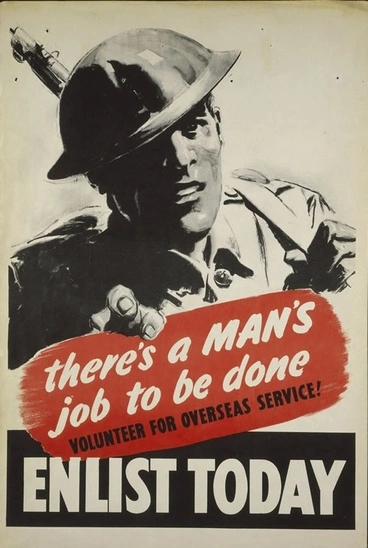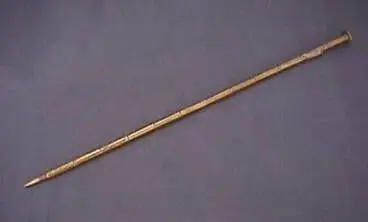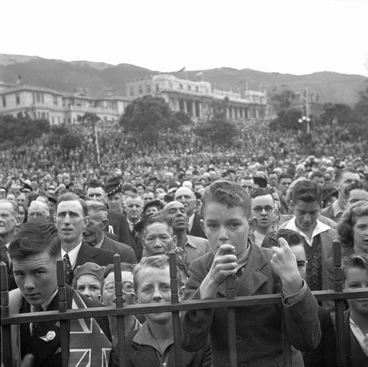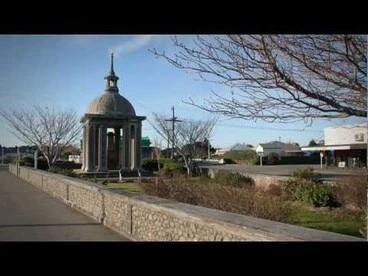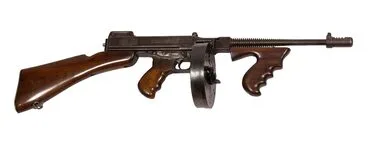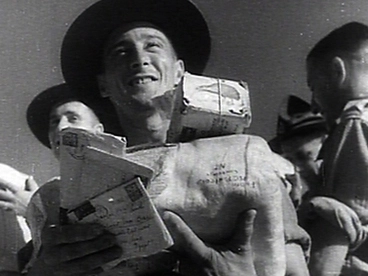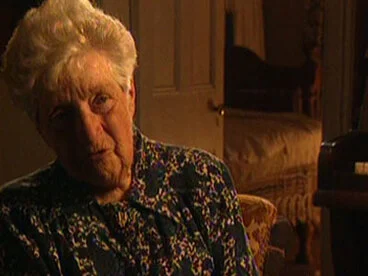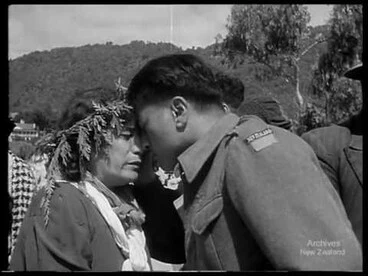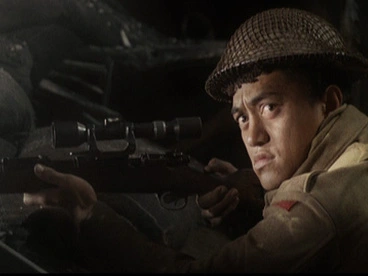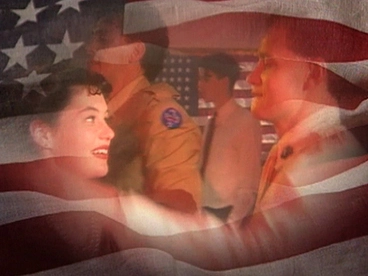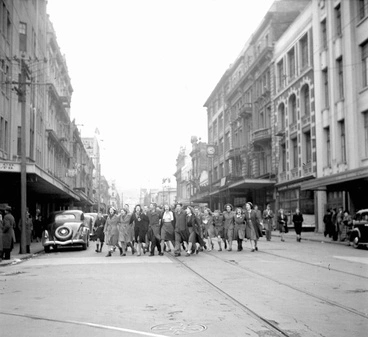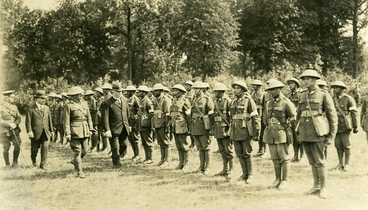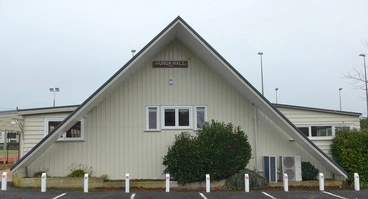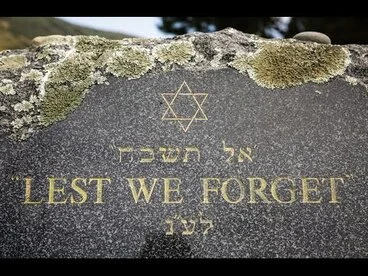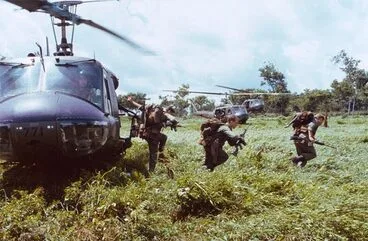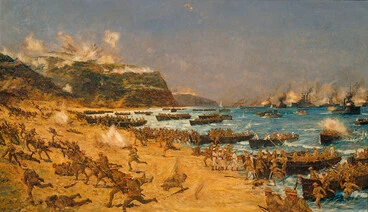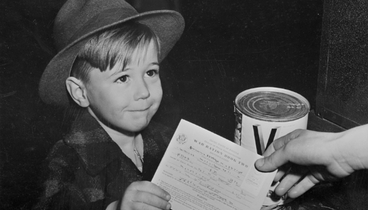New Zealand and the Second World War
A DigitalNZ Story by National Library of New Zealand Topics
New Zealand independently declared war on Germany on 3 September 1939. This topic covers the battles fought, our defence forces, the Māori Battalion, heroes, nurses, the war effort at home ,and effects of the WW2 on New Zealand. SCIS no: 1892562
Māori Battalion perform the haka
Every country has a small number of identifiable ‘iconic’ WW2 photographs and this is one of New Zealand's. Here members of the Māori Battalion perform the haka for George II, King of Greece, who was in exile in Egypt at that time. The men in the background are John Manuel, Maaka (Bill) White, Te Kooti (Scooty) Reihana and Rangi Henderson. John, Maaka and Rangi died in action and Te Kooti was wounded during the war. Evacuated from Greece and Crete during the German invasion, the battalion went on to serve throughout the North African campaigns. They suffered heavy casualties but gained a reputation for being outstanding soldiers.
Alexander Turnbull Library
Achievements - Māori and the Second World War
Manatū Taonga, the Ministry for Culture and Heritage
Maori Battalion tommy gun training at Maadi, Egypt
Alexander Turnbull Library
Second World War timeline - Second World War - overview
Manatū Taonga, the Ministry for Culture and Heritage
Crowd in Wellington on VJ Day
Alexander Turnbull Library
28th Māori Battalion roll
Services to Schools
Prime Minister Michael Joseph Savage addresses New Zealand.
Services to Schools
Devonport school pupils entering air raid shelters
Alexander Turnbull Library
Recruitment poster, 1940
Manatū Taonga, the Ministry for Culture and Heritage
Veterans mark 68th anniversary of Battle of Crete
Radio New Zealand
New Zealand infantry waiting for moment of advance across Senio river
Alexander Turnbull Library
VE and VJ days - VE and VJ days
Manatū Taonga, the Ministry for Culture and Heritage
VE Day crowds at Parliament
Manatū Taonga, the Ministry for Culture and Heritage
NZEF in Italy, 1944
Manatū Taonga, the Ministry for Culture and Heritage
The North African Campaign - The North African Campaign
Manatū Taonga, the Ministry for Culture and Heritage
Helmet, 'E.P.S. Information'
Museum of New Zealand Te Papa Tongarewa
United States Marine drinking milk, New Zealand
Alexander Turnbull Library
Featherston's camp - Roadside Stories
Manatū Taonga, the Ministry for Culture and Heritage
CHAPTER 4 — Response from the Home Front - The Home Front Volume I
Victoria University of Wellington
Amberley hero - Charles Upham
Manatū Taonga, the Ministry for Culture and Heritage
Jayforce soldiers with Japanese children, Mishima Island, Japan
Manatū Taonga, the Ministry for Culture and Heritage
Thompson sub-machine gun
Manatū Taonga, the Ministry for Culture and Heritage
David Grant - Conscientious Objectors
Radio New Zealand
Munitions factory workers, Second World War
Manatū Taonga, the Ministry for Culture and Heritage
Land girl
Manatū Taonga, the Ministry for Culture and Heritage
New Zealand and the Second World War - Second World War - overview
Manatū Taonga, the Ministry for Culture and Heritage
Our People Our Century - Families at War
NZ On Screen
Resistance fighter remembered as fearless heroine
Radio New Zealand
Tank designed by Robert Semple
Alexander Turnbull Library
Weekly Review No. 232 (1946)
Archives New Zealand Te Rua Mahara o te Kāwanatanga
Tama Tū
NZ On Screen
Over Here
NZ On Screen
New release of Blue Smoke
Radio New Zealand
New Zealanders around a captured German motorcycle, World War II
Alexander Turnbull Library
Battle of the River Plate
Manatū Taonga, the Ministry for Culture and Heritage
Poster, 'Taringa Whakarongo!'
Museum of New Zealand Te Papa Tongarewa
Operation Mercury
Services to Schools
Dig for victory: New Zealand's Second World War gardens
Services to Schools
Jewish refugees in 1930-1940s New Zealand
Services to Schools
New Zealand in the Second World War
Services to Schools
The Kiwi Concert Party in the Second World War
Services to Schools
New Zealand prepares for Japan
Services to Schools
New Zealand Women’s Land Service
Services to Schools
He served in WW1 and WW2
Services to Schools
The Phoney War
Services to Schools
Featherston’s peace garden
Services to Schools
A story of the Second World War
Services to Schools
El Alamein veteran brings history to life
Services to Schools
Veteran Portrait Project
Services to Schools
Second World War diaries
Services to Schools
Wrights Hill Fortress
Services to Schools
Defending New Zealand
Services to Schools
War Stories
Services to Schools
Uncovering the story of Fortress Northland
Services to Schools
Massacre at Featherston
Services to Schools
Home Guards
Services to Schools
Second World War hero Haane Manahi
Services to Schools
Japanese wood carving
This wood carving was created by a Japanese prisoner at a camp near Featherston during WW2. At the request of the US military, New Zealand accepted Japanese prisoners of war from Guadalcanal. While many accepted their situation, some refused to work. In an unfortunate incident on 25 February, 1943, Japanese soldiers were shot dead or wounded by New Zealand guards at the Featherston POW camp. A military court exonerated New Zealand but the Japanese government refused to accept the court’s decision.
Alexander Turnbull Library
Charles Upham
This is a portrait photograph of Charles Upham, one on New Zealand’s greatest Second World War heroes. Upham is the only New Zealand soldier to be awarded the Victoria Cross twice for his bravery in Crete in 1941 and in Egypt in 1942. Born in Christchurch in 1909, Upham joined the 2nd NZ Expeditionary Force as soon as war broke out in September 1939. As a soldier, he was known for his toughness, steely determination and absolute professionalism.
Alexander Turnbull Library
Volunteer for national service
This poster appeals to New Zealanders to join the war effort by taking up auxiliary roles. For example, men could join the New Zealand Home Guard and women could become nurses. The Home Guard was created to defend New Zealand against a possible Japanese invasion. The New Zealand Army Nursing Service was set up during WWI by Hester Maclean who wanted New Zealand soldiers overseas to be nursed by New Zealanders. Much was learned during the First World War that helped nursing in the Second World War. About 680 nurses served during WW2.
Museum of New Zealand Te Papa Tongarewa
HMNZS Leander
HMNZS Leander anchors in a Middle Eastern port during World War II. The light cruiser served with the Royal New Zealand Navy during World War II. In 1840 it sank the Italian commerce raider Ramb I in the Indian Ocean. Then in 1943, it fought alongside US ships against a Japanese cruiser in the Battle of Kolombangara in the Pacific War. Unfortunately, it got hit by an enemy torpedo after which the ship was sent to America for repairs.
Alexander Turnbull Library
VJ day
Canadian soldiers celebrate VJ Day or Victory Over Japan at Customhouse Quay in Wellington. America dropped atomic bombs over cities in Hiroshima and Nagasaki causing Japan to surrender and this brought an end to the Pacific war. News about the end of the war reached New Zealand at 11am on 15 August 1945. Sirens sounded and celebrations soon followed. A two day public holiday was declared in New Zealand.
Alexander Turnbull Library
Flyer to New Zealand boys
This flyer is an example of German propaganda distributed to Allied forces in Italy during WW2. It congratulates the New Zealand Army for their capture of Faenza in December 1944 but complains about 12 unarmed German prisoners who were allegedly shot by New Zealand soldiers. The Germans didn’t believe this was an honourable way to treat soldiers in war. The flyer invites the New Zealanders to wait for the end of the war in one of their quiet prisoner camps rather than face the fierce German artillery.
Alexander Turnbull Library
Tonga Defence Force of 2nd NZEF
Two rows of men face each other in a bayonet drill in Tonga. They are members of the Tonga Defence Force. Great Britain along with allies and United States declared war on Japan after it attacked the United States Naval Base Pearl Harbour. New Zealand declared war on Japan on 8 December 1941. For this reason, New Zealand had to step up its war effort in the Pacific. This image shows Tongan troops being trained by the Second New Zealand Expeditionary Force.
Alexander Turnbull Library
The man leaning over the boat with a mine detector is trying to locate WW2 mines laid in Lyttelton Harbour by the German minelayer Adjutant. The navy’s Mine Counter Measures (MCMT) Team was asked to search for the mines when plans came up to dredge the channel to deepen it. Similar mines were also said to be laid at the entrance to Wellington Harbour by the Adjutant — the only enemy vessel sunk in New Zealand waters during WW2.
News- There's a search off Lyttelton Harbour for WWII mines that could be activated by magnetic or acoustic activity. "Looks like 'Acoustic Activit...
Alexander Turnbull Library
US forces in New Zealand - US Forces in New Zealand
Manatū Taonga, the Ministry for Culture and Heritage
World War Two (New Zealand involvement)
National Library of New Zealand
World War Two (causes and impacts)
National Library of New Zealand
VJ Day street celebrations in Wellington
Manatū Taonga, the Ministry for Culture and Heritage
Māori Battalion
National Library of New Zealand
Hunua and Paparimu Roll of Honour
Manatū Taonga, the Ministry for Culture and Heritage
Germany. Propaganda Abschnitts Offizer Italien: Death. Doomsday 1944.
Alexander Turnbull Library
Reflecting on wartime rationing
Services to Schools
Commonwealth War Graves Commission
Services to Schools
Anzac
DigitalNZ
The Holocaust
DigitalNZ
Gallipoli Campaign
DigitalNZ
World War Two (daily life)
National Library of New Zealand
